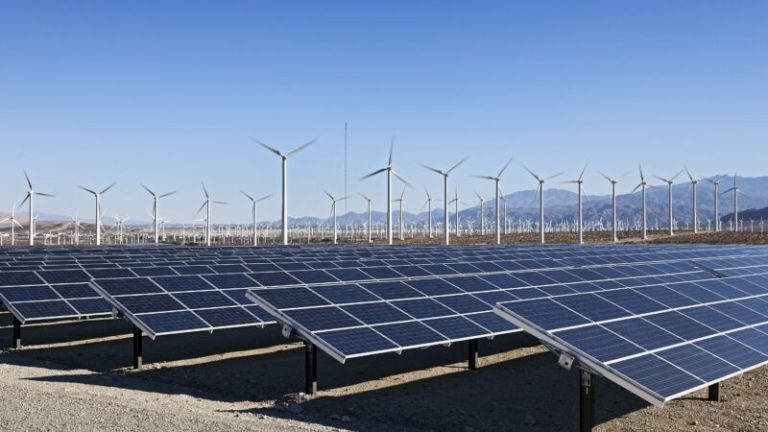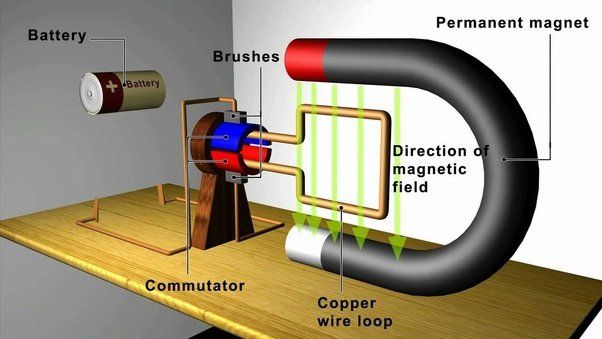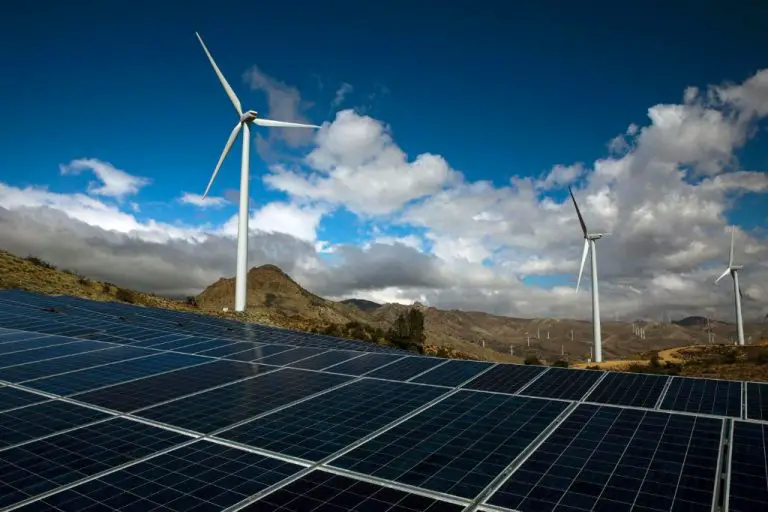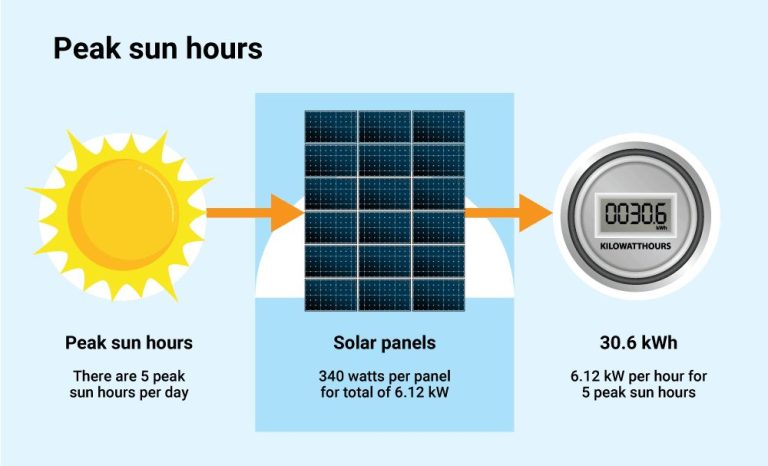Why Shouldn’T We Use Renewable Energy?
The high upfront costs of renewable energy
Installing renewable energy like solar or wind is expensive initially compared to fossil fuels. The upfront capital costs for solar and wind projects are significantly higher than building a natural gas power plant. According to the EIA, the overnight capital costs for onshore wind farms can be 1.5x higher than natural gas combined cycle plants. Solar PV plants are almost 2x as expensive to build per MW generated (Source 1).
However, once installed, the “fuel” costs for renewables are minimal or zero. Whereas natural gas power relies on continual purchasing of fuel to burn. Over the full lifetime, solar and wind can generate electricity at lower total costs than fossil fuels. But these long-term savings don’t help with the initial investment and construction costs. This creates a barrier to mass adoption, as many utilities or developers focus on minimizing short-term costs over long-term benefits.
Intermittency challenges with wind and solar
Wind and solar energy are intermittent renewable energy sources. This means their power generation fluctuates based on weather conditions and the time of day, rather than providing a constant baseload power output. For example, solar panels only produce electricity when the sun is shining, and wind turbines require sufficient wind speeds to spin their blades (generally over 8 mph or so). According to the Scientific American, intermittency makes it challenging to integrate high amounts of solar and wind onto the electric grid, disrupting conventional grid planning and operations [1].
The intermittency of wind and solar presents obstacles when trying to match power supply with electric demand, which must always remain balanced. If wind or solar suddenly drop off, backup power sources have to scale up to avoid blackouts. Energy storage can help smooth out supply and store excess renewable generation, but large-scale solutions remain costly. Forecasting tools and flexible grid management will also assist with integrating higher renewables. Ultimately, addressing intermittency requires major grid upgrades and improved power system operations.
Some renewable sources have geographical limitations
Certain renewable energy sources are limited to areas with the right geographic resources and climate. For example, hydropower relies on the availability of flowing rivers and is concentrated in regions with adequate rainfall and river systems like the Pacific Northwest, parts of the Rocky Mountains, and Central America. Similarly, geothermal energy requires natural hot springs and underground reservoirs in volcanic regions like Iceland, the western U.S., East Africa, and the Philippines.1
Solar and wind power also depend on regional climate and landscapes. The highest quality solar resources are found in sunny, arid areas like the U.S. Southwest. Meanwhile, strong and consistent winds suitable for wind power tend to occur in plains, offshore, and mountain passes. Areas without the right geography and natural resources face limitations in exploiting these renewable sources. While transmission improvements can help distribute renewable power, sources must still be located where the resources exist.
Transmission infrastructure needs upgrading
Bringing renewable power from source to cities requires major grid upgrades. Currently, the U.S. grid was not designed for long-distance transmission from remote renewable generating sites to population centers. Significant investment is needed in new high-voltage direct current (HVDC) transmission lines and substations to handle the variability and transportation of wind and solar power across the country.
According to a report from the American Action Forum, the estimated capital costs for new transmission facilities to support expanded renewable energy range from $314 billion to $504 billion (source). Upgrading transmission infrastructure comes at a very high upfront price tag.
The U.S. grid is aging and needs upgrades regardless of a transition to renewables. However, bringing large amounts of variable wind and solar onto the grid will require more significant reinforcement. While these major grid upgrades are feasible from an engineering perspective, the high costs and approvals required present challenges.
Fossil fuel subsidies skew the playing field
Global subsidies for fossil fuels make them artificially cheaper. According to the IMF, fossil fuel subsidies were $7 trillion globally in 2022, reflecting a $2 trillion increase since 20201. The IEA reports that global fossil fuel consumption subsidies exceeded $1 trillion in 2022 for the first time2. These subsidies far outpace government support for renewable energy. HRW notes fossil fuel subsidies are estimated at 6.5% of global GDP, while renewables receive far less3. This unequal support skews energy economics in favor of fossil fuels over cleaner alternatives.
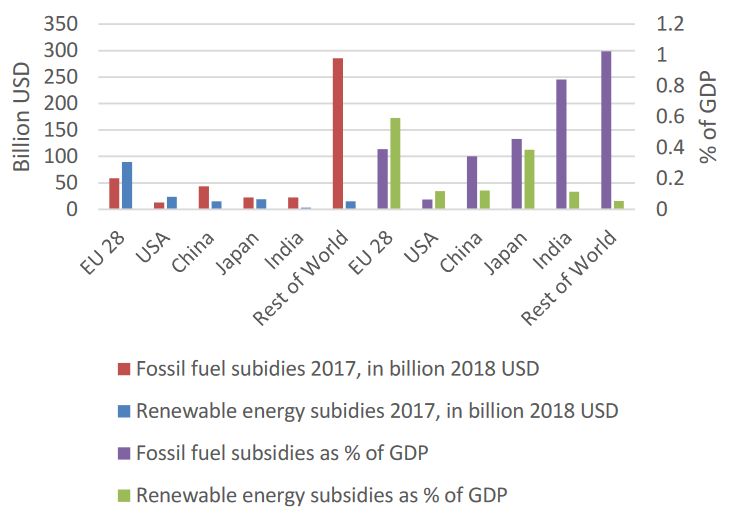
Mass adoption requires sweeping systemic change
Transitioning an entire grid to renewable energy is complex and disruptive. Countries rely on fossil fuels to meet the majority of their energy needs, with massive infrastructure built around coal, oil and natural gas. Shifting to renewables requires overhauling how we generate, transmit, store and consume energy across cities, states and nations. It involves replacing centralized grids with more distributed, localized systems. Mass adoption also requires major investments to upgrade aging infrastructure and link far-flung renewable sources. For example, optimal solar and wind sites are often in remote areas. Transmitting this energy to population centers necessitates expanded transmission corridors. Such sweeping change is technically challenging and expensive in the short term. While vital for climate goals, the scale of the transition likely gives pause to political leaders and energy planners. Incremental adoption may be more pragmatic as technologies mature and costs decline. With smart policies, subsidies and research, renewables can continue displacing fossil fuels over time. But immediately switching wholesale poses economic and engineering hurdles. A balanced transition that maintains reliability and affordable energy may be the most realistic path forward.
Renewables may not yet be ready for large-scale baseload power
Some experts argue renewables can’t provide stable baseload power needs at current technology levels. Baseload power generation refers to the minimum level of electricity demand over a 24 hour period. Traditional sources like coal, nuclear and natural gas have provided consistent baseload power. But some question whether variable renewable sources like wind and solar can reliably meet baseload demand without disruption.
For example, some analyses show that solar and wind may fall short of providing continuous baseload power at current adoption rates. Factors like intermittency, storage limitations, and grid stability are cited as challenges [1]. Without advances in grid flexibility and energy storage, renewables may not substitute for traditional baseload capacity.
However, other experts argue that with the right grid improvements and diversified renewable sources, wind and solar can provide stable and affordable clean energy. Regional case studies have demonstrated the viability of high renewable grids through increased transmission capacity and intelligent management [2]. Moreover, even in the last few years, prices for storage technologies have declined rapidly while adoption has expanded [3]. While challenges remain, many are optimistic renewables will eventually meet baseload needs.
Some technologies remain inefficient or experimental
While renewables like solar and wind are becoming more mature and cost-competitive, certain emerging technologies like tidal power are not yet ready for widescale adoption. Tidal power harnesses energy from the ebb and flow of tides, but the technology faces challenges around efficiency and reliability before it can scale up.
According to Maritime Executive, tidal power plants are still in the demonstration and prototype phase, with only a few small tidal farms operating commercially. Issues like turbine blade corrosion and unpredictable tidal currents have made harvesting tidal energy tricky on a large scale.
However, there are signs of progress. As reported by Business News Wales, developers are working to prove the commercial viability of tidal through pilot projects. And Spencer Ogden notes the recent doubling of a tidal array in Scotland, showing the technology’s scalability.
While tidal holds promise as a renewable baseload power source, it still requires more RD&D and real-world testing before it can be deemed commercially ready and financially competitive with alternatives. But with sustained investment and innovation, its potential could be realized in the coming decades.
Developing countries prioritize poverty reduction over climate
Many developing countries prioritize providing cheap, reliable electricity over reducing emissions in order to grow their economies and lift people out of poverty. Renewable energy sources like solar and wind often require high upfront investments that poorer nations cannot afford. Building out renewable infrastructure also requires strong governance and technological capabilities that developing countries may lack.
According to the World Bank, in many client countries, the clean energy transition risks stalling due to “weak governance, poorly targeted subsidies, and inadequate infrastructure.” https://www.worldbank.org/en/news/feature/2023/05/16/breaking-down-barriers-to-clean-energy-transition
Developing nations want access to the cheapest and most reliable power sources, like coal, to grow their economies and reduce poverty. Renewables are often viewed as expensive and intermittent. Without financial support, developing countries will likely continue relying on fossil fuels in the near term to meet their development goals.
Fossil fuel interests lobby against transition
Powerful oil, gas, and coal companies spend millions each year on lobbying to protect their business interests and impede the transition to renewable energy sources. The fossil fuel industry has worked for decades to sow doubt about climate change and downplay the need to reduce greenhouse gas emissions (1). Major players like ExxonMobil and the American Petroleum Institute lobby politicians extensively, promoting continued reliance on fossil fuels and opposing climate policies (2,3). In 2022, the oil and gas industry spent over $130 million on lobbying in the US alone (4). Lobbyists work to secure subsidies and tax breaks for fossil fuel companies, while fighting policies that would make renewables more competitive (5). Fossil fuel interests also fund front groups and “astroturf campaigns” to create the illusion of grassroots opposition to climate action (1). Their influence remains a significant obstacle to the systemic changes needed for a widespread renewable energy transition.
Sources:
(1) https://www.americanprogress.org/article/these-fossil-fuel-industry-tactics-are-fueling-democratic-backsliding/
(2) https://www.theguardian.com/us-news/2023/jul/05/double-agent-fossil-fuel-lobbyists
(3) https://kleinmanenergy.upenn.edu/news-insights/unmasking-dark-money-how-fossil-fuel-interests-can-undermine-clean-energy-progress/
(4) https://www.opensecrets.org/industries/lobbying.php?ind=E01
(5) https://www.nrdc.org/experts/danielle-droitsch/time-end-fossil-fuel-subsidies


